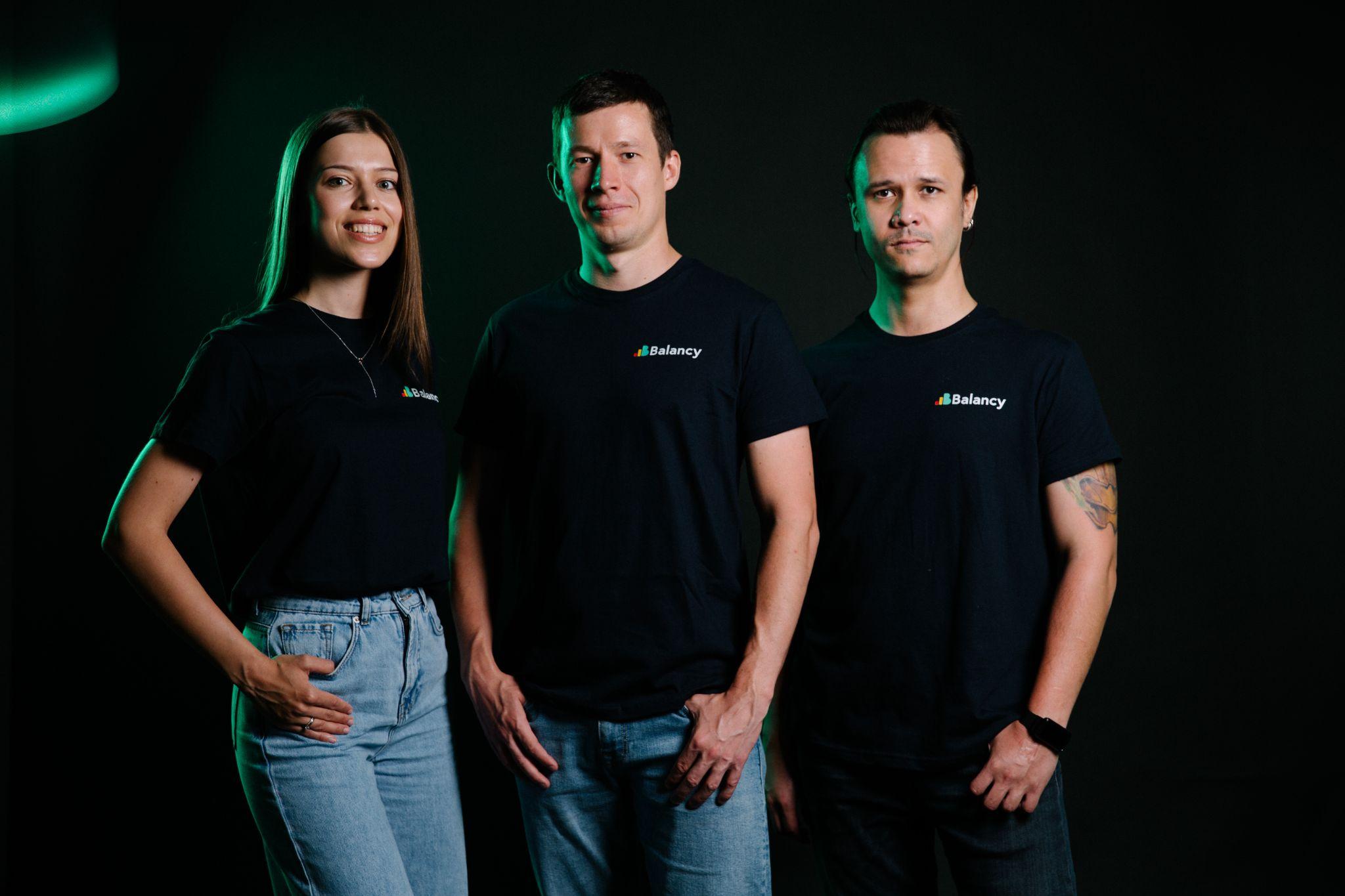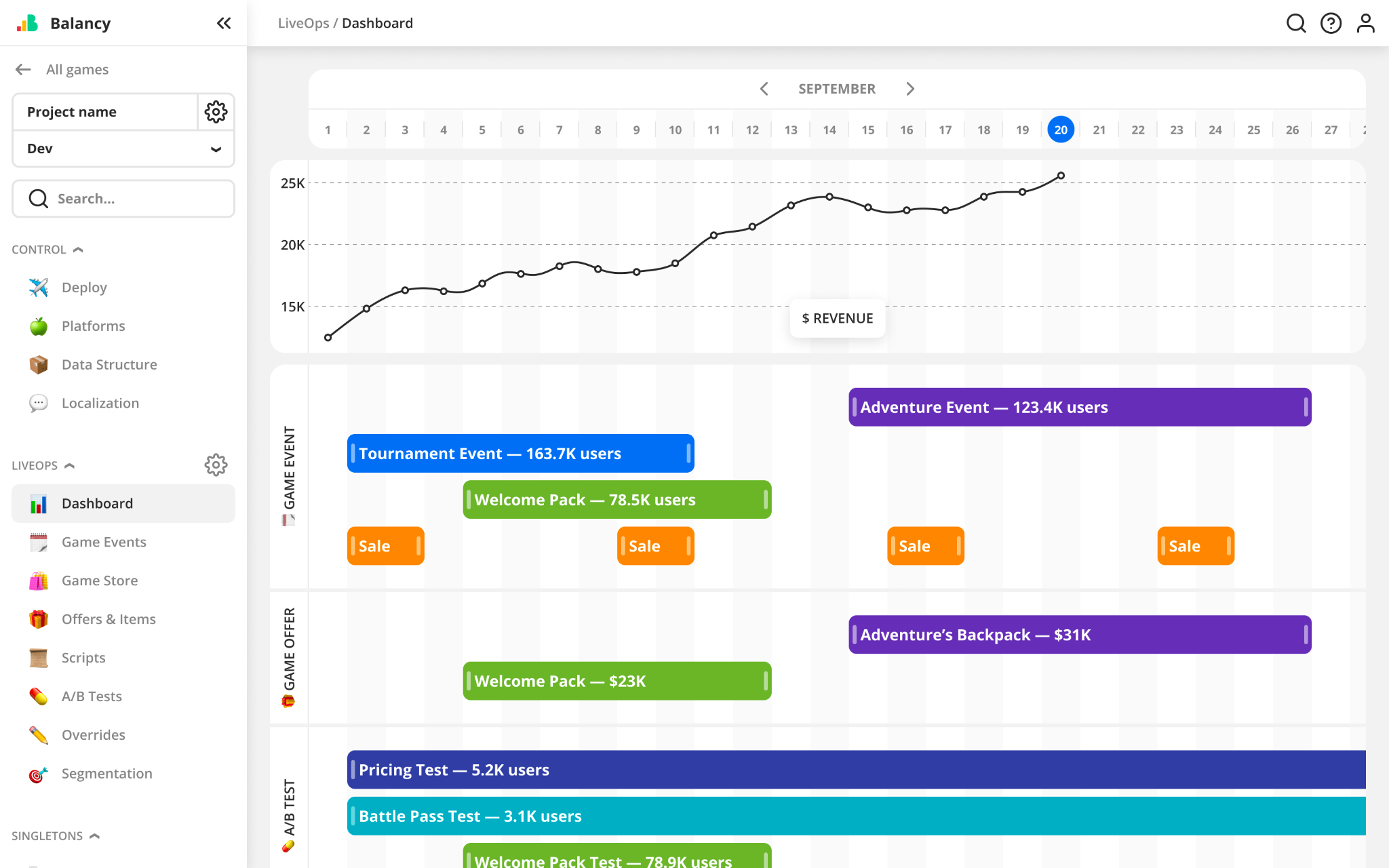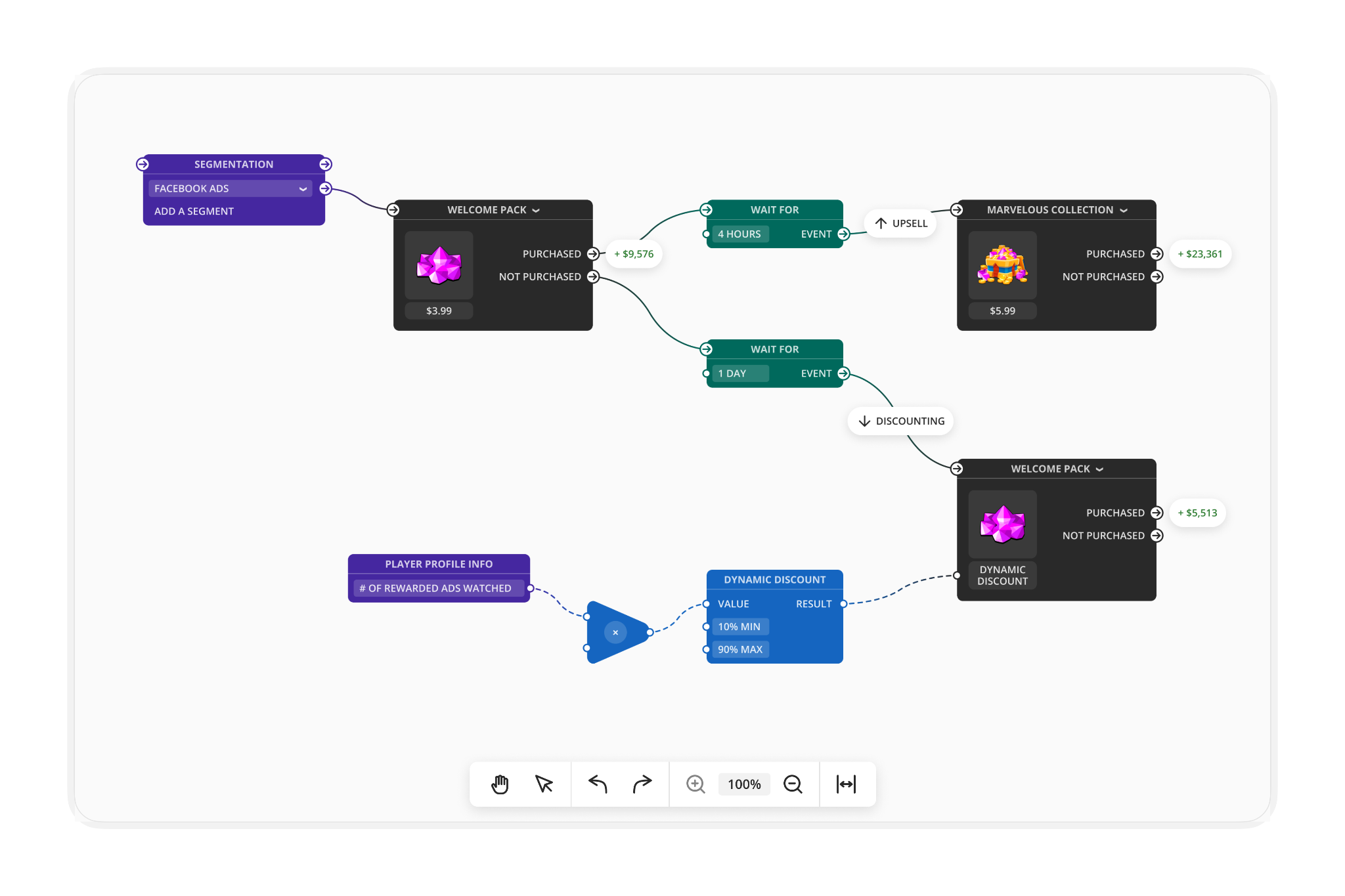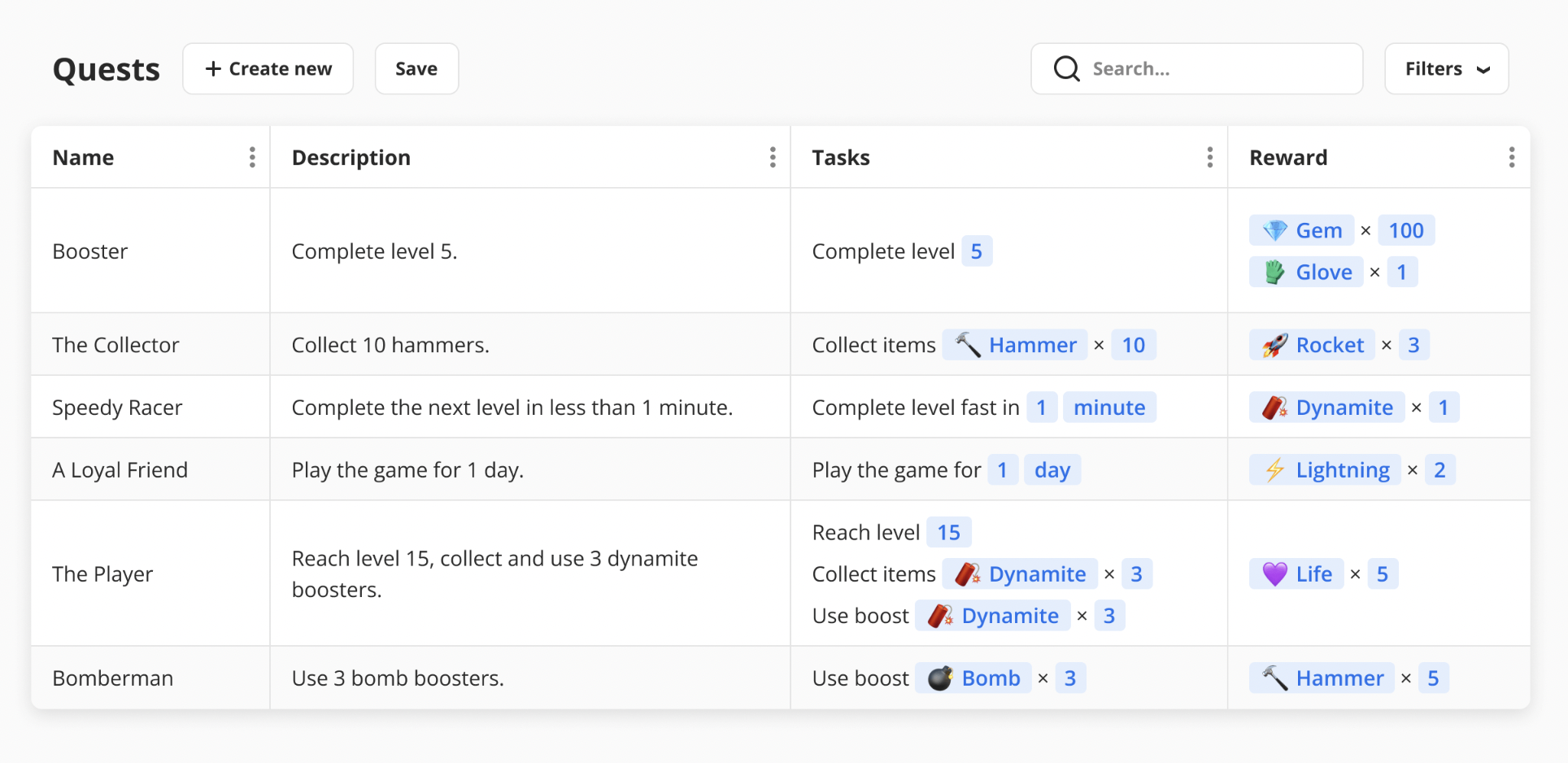How Balancy is transforming LiveOps? – Interview with Julia Iljuk, Co-Founder
What is LiveOps and why is it essential in the gaming industry today? How can a well-designed LiveOps infrastructure help game developers stand out in an increasingly competitive market? What role does Balancy play in simplifying and enhancing LiveOps management for studios of all sizes?
In today’s rapidly evolving gaming landscape, LiveOps is no longer an optional feature—it has become a core driver of player engagement and revenue growth. For developers, it means constantly delivering new and engaging content, special events, and personalized offers to keep players invested. However, this process can be time-consuming and challenging without the right tools.
In this article, we share an exclusive interview with Julia Iljuk, the Co-founder and Head of Growth at Balancy, a cutting-edge LiveOps platform designed to streamline development and increase player lifetime value (LTV). Julia talks about Balancy’s unique approach to no-code LiveOps, its visual scripting features, and how it empowers game developers and product teams to build and manage game content more efficiently without coding.

Balancy Team
What is Balancy, and what problems in the gaming industry did you aim to solve by creating it?
Balancy is a LiveOps platform designed to help game studios accelerate development cycles and increase player LTV.
It’s no secret that LiveOps is the key driver of a game’s revenue and long-term success. It means studios must constantly deliver new engaging content, relevant events and offers to their players. However, many studios—even large ones—still rely on outdated and cumbersome workflows involving JSON files, spreadsheets, or hardcoding for updates.
Balancy simplifies the whole LiveOps management process by providing a user-friendly platform that accelerates development cycles and helps to boost monetization metrics.

What type of game studios is Balancy most suited for? Is it a tool exclusively for large companies, or is it also suitable for small and medium-sized developers?
I’m happy and proud to say that top-grossing publishers like Lion Studios (Applovin) and Kwalee trust Balancy to manage their live portfolios. They value our high-quality support and unique tools for publishers – such as packages, which let them easily replicate successful features across games.
However, smaller studios and indie developers also enjoy Balancy. They find the platform easy to onboard and essential for a fast market launch, giving them instant access to powerful tools and expertise.
How does Balancy differ from other LiveOps platforms on the market?
Our strategy—and perhaps our secret to success—is our focus on mastering a specific niche. Unlike platforms like PlayFab, which offer a vast array of functionality types, Balancy is the best at one thing: no-code LiveOps.
We are the only platform that enables full visual configuration of game settings and balance, eliminating the need to work with JSON files (we call it a content management system).
Additionally, our visual scripting feature is a truly unique market offering, empowering product teams to build custom game logic using intuitive visual nodes, similar to Unreal Blueprints.

Visual scripting
Is the tool tailored solely for mobile games, or can it also be used for games on other platforms such as PC or consoles?
Balancy works with all types of games, including PC and console, as long as they use one of our supported SDKs (Unity, Cocos Creator, or TypeScript).
What are the key modules of Balancy, and how do they help in managing a game?
I like to talk about Balancy as a unified platform because everything is so seamlessly interconnected—it’s truly beautiful! However, if I were to highlight key modules, these two can be defined:
Content management system – enables remote storage and management of game settings and balance.
LiveOps module – provides essential tools for operations, including an event calendar, special offers, in-game shop, A/B testing, segmentation, and more.
How does the Content Management System (CMS) work, and what advantages does it offer compared to traditional methods of managing game updates?
With the CMS, you can create and manage any game feature or setting remotely in a visual, error-proof format. You can build quest systems, battle passes, wheel of fortune, manage level difficulty and ad configurations easily—the system adapts to your game’s needs.

An example of how you can set up a quest system with Balancy’s CMS.
How does Balancy support monetization? Do you have specific case studies demonstrating how the platform has helped increase revenues?
Balancy helps build IAP monetization quickly from scratch, making it flexible and dynamic for future personalization by the product team. For example, if you set up IAPs via Balancy from the beginning, you can later arrange them in offer sequences, target for specific segments, and A/B test – in just a few clicks.
Our case studies show how the platform drives revenue growth. For example, Game Garden shared how they personalized their in-game shop, while Hot Siberians used our visual scripting feature to create smart special offers. Very soon, we will publish a case study with Kwalee, so stay tuned!
Are there any new modules planned?
This year, we’re focused on enhancing our analytics capabilities. It’s essential to properly analyze all the changes and activities driven by Balancy to inform the next iteration.
LiveOps has become a critical component of maintaining games. How do you see its development in 2025?
In 2025, the question won’t be whether to have LiveOps in your game, but how quickly you can adapt, release new content, and A/B test. A strong LiveOps infrastructure will be essential, even for smaller studios, if they want to compete with larger games.
What trends in LiveOps, such as personalization and artificial intelligence, do you plan to implement in Balancy?
We’re definitely exploring the integration of AI features into Balancy, as it’s a natural progression for the platform.
How easy is it to integrate Balancy with an existing game? Do you support various game engines such as Unity, Unreal, or custom solutions?
We offer SDKs for Unity, Cocos Creator, and TypeScript. Integrating the SDK is quick and straightforward, it won’t take you more than a couple of hours. However, you’ll also need to configure the platform to fit your specific needs, and the setup time will depend on the amount of content you want to start with. On average, this process takes between 1 to 3 weeks.
What are the technical requirements to start working with Balancy? Is a dedicated team necessary?
To start with Balancy, the minimum team setup you need will consist of a developer (who will integrate the platform) and a product/monetization manager (who will operate the platform).
What are your product development plans for the coming years?
As mentioned earlier, one of our key focuses will be enhancing our analytics features. In addition, our A/B testing module will become more powerful, and we’ll streamline the process of setting up special offers in Balancy for faster implementation.
You run educational initiatives such as webinars and publish ebooks, for example, the excellent Best Practices for In-Game Shops for game economy designers and monetization specialists. There’s a lack of materials online that show how to design mobile game economies or build monetization from scratch. Game studios often don’t want to share their insights, which is understandable. Do you plan to expand your educational content, specifically on topics like mobile game economy design or monetization?
Yes, definitely! We are already planning our next book 😉 We will collect even more best practices for developers.
What is your biggest challenge in educating the market about LiveOps?
The challenge is that every game is unique, so there’s no one-size-fits-all advice. While certain practices may work well for one game, they might not work for another. That’s why it’s crucial to educate people not just to copy-paste, but to invest time in detailed planning and extensive testing.
If you had to highlight one feature of Balancy that you believe is the most revolutionary for the industry, what would it be?
Right now, it’s visual scripting. It lets you modify the game without any coding, making game development more accessible and efficient. This is the future of game development.
How do you think game management will evolve in the next 5–10 years?
In the next 5–10 years, game management will be shaped by the synergy of LiveOps and AI. While human oversight and control will still be essential, AI will increasingly automate tasks like content generation, player behavior analysis, and dynamic difficulty and pricing adjustments. This will lead to more personalized and engaging player experiences, allowing developers to fine-tune games in real-time and keep them fresh and competitive for longer periods.
What advice would you give to small studios that want to start their LiveOps journey but are worried about costs and complexity?
One thing is certain: you need to plan your LiveOps from the very concept stage of your game. If you’re concerned about lacking experience, consider using established LiveOps platforms or partnering with publishers. In today’s gaming landscape, LiveOps is essential for turning a game into a profitable business.
How much does it cost to create a mobile game?
What is LiveOps and why is it essential in the gaming industry today? How can a...

